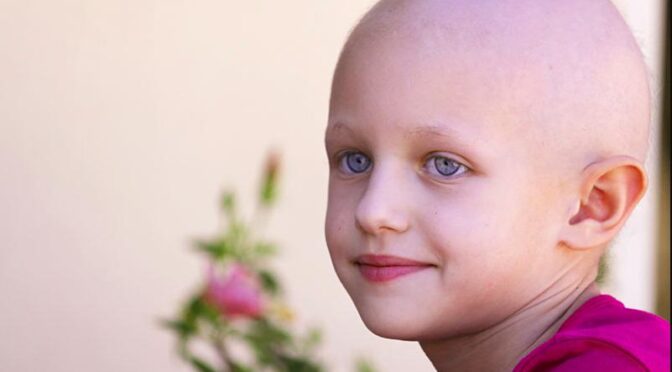Hearing a diagnosis of stage 4 throat cancer can be overwhelming and frightening. One of the first questions patients and their loved ones often ask is, “How long can someone live with stage 4 throat cancer?” While this question is natural, the answer depends on many factors, including the type of throat cancer, its spread, treatment options, and the individual’s overall health.
Understanding the condition, available treatments, and lifestyle choices can make a tremendous difference in both quality of life and longevity. This article will explore the key aspects of stage 4 throat cancer, including symptoms, diagnosis, treatment, prognosis, and emotional coping strategies — giving patients and families the information they need to move forward with clarity and hope.
Definition and Overview
Stage 4 throat cancer refers to the most advanced stage of cancer originating in the throat (pharynx) or voice box (larynx). At this stage, cancer has typically spread to nearby tissues, lymph nodes, or distant organs such as the lungs. The progression may affect speech, swallowing, and breathing, making timely and comprehensive care essential.
The prognosis for stage 4 throat cancer varies significantly depending on factors such as tumor location, size, spread, and response to treatment. Although it is considered advanced, modern treatments have improved survival rates and quality of life for many patients.
Types
Throat cancer generally includes two main categories:
- Oropharyngeal Cancer – affects the middle part of the throat, including the tonsils and base of the tongue.
- Laryngeal Cancer – affects the larynx (voice box), including the vocal cords.
Other related cancers can involve the nasopharynx (upper throat behind the nose) or hypopharynx (lower part of the throat). Each type behaves differently and requires specific treatment approaches.
Causes and Risk Factors
Several factors can increase the risk of developing throat cancer, including:
- Tobacco use (smoking or chewing)
- Heavy alcohol consumption
- Human papillomavirus (HPV) infection
- Poor diet lacking fruits and vegetables
- Long-term exposure to asbestos or certain chemicals
- Gastroesophageal reflux disease (GERD)
- Genetic predisposition
The combination of tobacco and alcohol use dramatically raises the risk. Meanwhile, HPV-related throat cancers tend to have a better prognosis than those linked to smoking.
Symptoms and Early Warning Signs
Common symptoms of stage 4 throat cancer may include:
- Persistent sore throat or cough
- Hoarseness or voice changes
- Difficulty swallowing or breathing
- Ear pain without infection
- Lump or swelling in the neck
- Unexplained weight loss
- Fatigue and general weakness
If you experience these symptoms for more than two weeks, it is crucial to see an ENT specialist for evaluation. Early diagnosis, even in advanced cases, can greatly influence outcomes.
Diagnosis
Diagnosis of stage 4 throat cancer involves several tests and imaging procedures, such as:
- Physical examination and endoscopy
- Biopsy to confirm cancer cells
- CT, MRI, or PET scans to assess spread
- HPV testing (especially in oropharyngeal cancers)
These diagnostic tools help doctors determine the exact location, stage, and spread of the disease, forming the foundation for a personalized treatment plan.
Treatment Options
Although stage 4 throat cancer is advanced, treatment can help control the disease, relieve symptoms, and improve survival. Common treatment options include:
- Surgery: Removal of the tumor and possibly affected lymph nodes.
- Radiation therapy: Targets and kills cancer cells with high-energy beams.
- Chemotherapy: Uses powerful drugs to destroy cancer cells, often combined with radiation.
- Targeted therapy: Focuses on specific molecules involved in cancer growth.
- Immunotherapy: Stimulates the body’s immune system to fight cancer cells.
A multidisciplinary approach combining these treatments often yields the best results.
Prevention and Lifestyle Recommendations
While not all cases can be prevented, several lifestyle choices can lower the risk or improve recovery:
- Avoid smoking and excessive alcohol use.
- Maintain a balanced diet rich in fruits, vegetables, and whole grains.
- Practice good oral hygiene.
- Get vaccinated against HPV.
- Manage reflux and chronic throat irritation.
- Attend regular follow-up appointments for early detection of recurrence.
Prognosis and Survival Rates
The question many ask — “Stage 4 throat cancer how long to live?” — does not have a single answer. Survival rates depend on multiple factors:
- Type of throat cancer (laryngeal, oropharyngeal, etc.)
- HPV status (HPV-positive cases have better outcomes)
- Overall health and response to treatment
On average, the five-year survival rate for stage 4 throat cancer ranges between 30% and 60%, depending on these variables. With advanced therapies and better supportive care, many patients now live longer, maintaining meaningful quality of life.
Latest Research and Innovations
Recent advances in cancer research have brought new hope for patients with stage 4 throat cancer. Innovations include:
- Immunotherapy drugs like pembrolizumab and nivolumab, which boost the immune system’s ability to target cancer cells.
- Precision medicine, using genetic profiling to customize treatment.
- Minimally invasive robotic surgery, reducing recovery time and improving functional outcomes.
Ongoing clinical trials continue to improve treatment outcomes and extend survival.
Coping and Support for Patients
Living with stage 4 throat cancer is not only a physical challenge but also an emotional journey. Support systems play a vital role in coping. Patients are encouraged to:
- Join support groups or online communities.
- Seek help from psychologists or counselors.
- Involve family and friends in care discussions.
- Explore palliative care for pain and symptom management.
Emotional and psychological well-being is as important as medical treatment in maintaining quality of life.
Conclusion
While stage 4 throat cancer represents an advanced form of the disease, it does not mean the end of hope. Many patients respond well to modern treatments and live meaningful lives for years. By understanding the condition, seeking timely treatment, and embracing a healthy lifestyle, patients can improve both longevity and well-being.
FAQ
1. What is stage 4 throat cancer?
Stage 4 throat cancer means the cancer has spread to nearby tissues, lymph nodes, or distant organs.
2. How long can someone live with stage 4 throat cancer?
Life expectancy varies widely, but the average five-year survival rate is around 30%–60%, depending on cancer type, HPV status, and treatment success.
3. Can stage 4 throat cancer be cured?
In some cases, aggressive treatment can lead to remission, but usually, it is managed as a chronic condition.
4. What are the signs that throat cancer has spread?
Symptoms like severe swallowing difficulty, weight loss, and swelling in the neck may indicate metastasis.
5. Does quitting smoking help after diagnosis?
Yes. Quitting smoking immediately improves treatment effectiveness and survival chances.
6. Is stage 4 throat cancer painful?
Pain and discomfort are common but can be managed effectively through medication and palliative care.
7. What support is available for patients and families?
Hospitals, cancer centers, and online communities offer counseling, support groups, and financial guidance for patients and caregivers.


